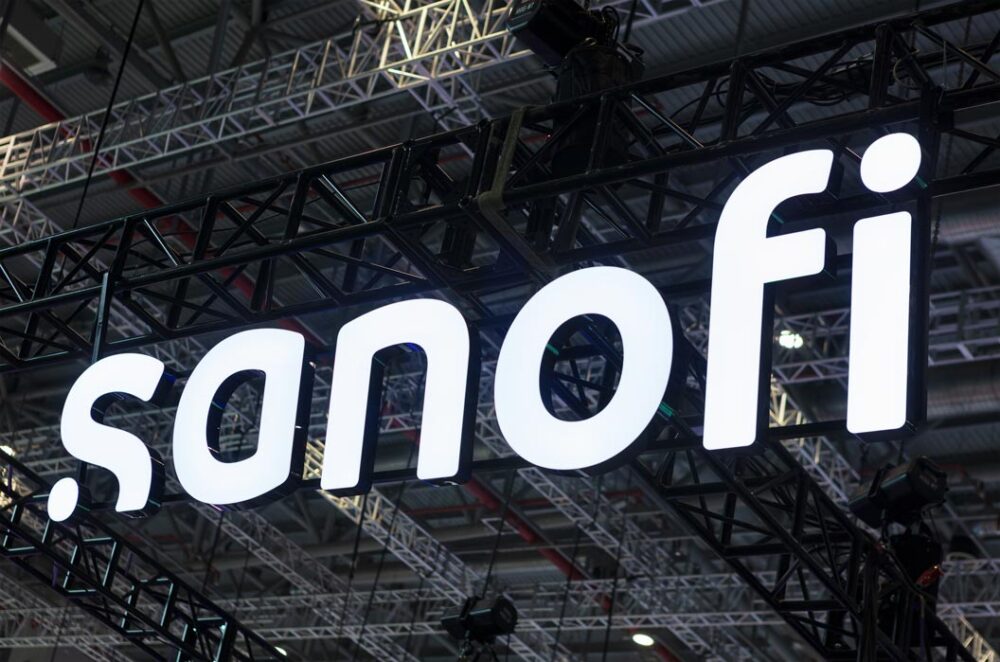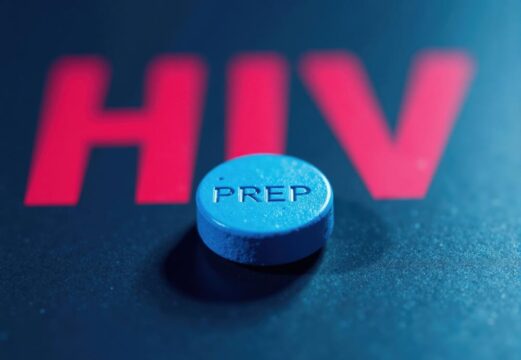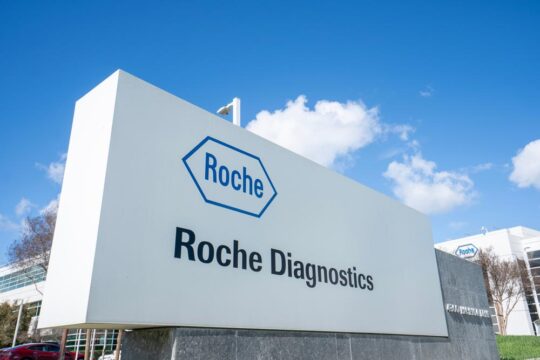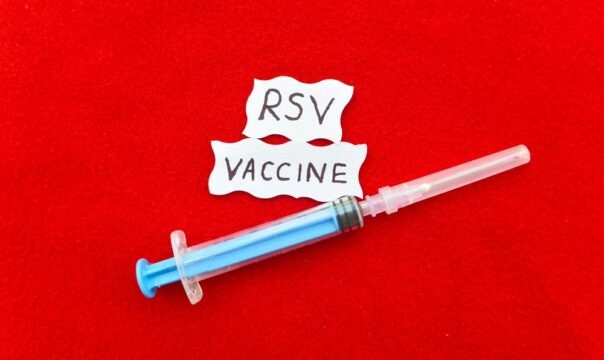Advertisment
New data from three oral presentations, showing significant clinical benefit with Sarclisa-based quadruplets in newly diagnosed multiple myeloma patients presented at ASH meeting – Sanofi

New data from three oral presentations, which demonstrated significant clinical benefit with Sarclisa-based quadruplets in newly diagnosed multiple myeloma (NDMM) patients were featured at the 66th American Society of Hematology (ASH) Annual Meeting & Exposition in San Diego, CA, US. The presentations, including results from the IMROZ and German-speaking Myeloma Multicenter Group (GMMG)-HD7 phase III studies, showcased deep and durable responses and improved long-term outcomes with Sarclisa when added to current standard-of-care NDMM (newly diagnosed multiple myeloma ) regimens.
Dietmar Berger, MD, PhD;; Chief Medical Officer, Global Head of Development at Sanofi; “An important part of our approach to scientific innovation in oncology is identifying synergistic combinations, which may allow us to impact numerous unmet needs with a single therapy and expand the pool of patients who could one day benefit from our medicines. Results from key studies evaluating Sarclisa combinations further reinforce our confidence in this strategy and speak to the potential benefit of Sarclisa as a backbone therapy for newly diagnosed multiple myeloma, regardless of transplant eligibility.”
Additional IMROZ phase III study analysis evaluating MRD (minimal residual disease) in transplant-ineligible (TI) NDMM patients; The IMROZ phase III study demonstrated that Sarclisa in combination with standard-of-care bortezomib, lenalidomide and dexamethasone (VRd), followed by Sarclisa-Rd, improved progression-free survival (PFS) and led to a rapid and greater depth of response compared to VRd alone, as shown by minimal residual disease (MRD) negativity rate over time, in TI NDMM patients. MRD negativity represents a measure of malignant cells left in the bone marrow after treatment and has been increasingly used as a surrogate endpoint for PFS in MM research. Numerous independent studies have shown a correlation between MRD negativity, deeper treatment responses and improved long-term outcomes.
Sarclisa-VRd demonstrated a consistent benefit at every time point up to 60 months and led to the highest MRD negativity rate of a NDMM regimen with a VRd backbone, when evaluating exclusively TI patients.; i. Higher MRD negativity rates were observed at both the end of initiation and during maintenance, with 58.1% of patients in the intention-to-treat (ITT) population treated with Sarclisa-VRd achieving MRD negativity versus 43.6% of patients in the control arm (OR 1.79; 95% CI: 1.22 to 2.63; p=0.0014). ii. In addition, patients treated with Sarclisa-VRd were significantly less likely to lose MRD negativity status post-induction, with only 12.3% of patients converting to MRD-positive status during maintenance (at 36 months), compared to 34.8% of patients in the control arm. iii. Sustained MRD negativity rates at ≥24 and ≥36 months were also two-to-threefold higher with Sarclisa-VRd compared to VRd (35.8% vs 13.3% and 25.7% vs 7.2%, respectively) at 10-5 sensitivity threshold, with higher rates also observed in the experimental arm at 10-6 sensitivity threshold. The deep responses observed with Sarclisa-VRd ultimately translated into an early PFS benefit that was maintained over time. iv. The safety and tolerability of Sarclisa observed in this study was consistent with the established safety profile of Sarclisa and VRd with no new safety signals observed.
Robert Orlowski, MD, PhD ; Florence Maude Thomas Cancer Research Professor at The University of Texas MD Anderson Cancer Center; “MRD negativity has long been used to infer deeper responses and improved outcomes in multiple myeloma research, but few studies have evaluated sustained MRD negativity beyond one year. In the latest analysis from the IMROZ study, one of the longest to evaluate MRD negativity with a CD38-based quadruplet, newly diagnosed transplant-ineligible patients treated with isatuximab-VRd were more likely to achieve this threshold compared to those receiving VRd alone and maintain it as long as three years. When viewed in tandem with earlier findings highlighting the significant progression-free survival benefit from IMROZ, these data reinforce the potential of isatuximab to generate deep and durable improvements in clinical outcomes throughout treatment when added to the standard-of-care regimen.”
New key results from the GMMG-HD7 study in transplant-eligible (TE) NDMM; New data from the induction part of the GMMG-HD7 phase III study were featured across two oral presentations at ASH. GMMG-HD7 is an investigational, pivotal, randomized, open-label, multicenter, 2-part phase 3 study evaluating Sarclisa in combination with RVd versus RVd induction followed by post-transplant re-randomization to Sarclisa plus lenalidomide versus lenalidomide maintenance in TE NDMM patients. The following results, which were simultaneously published in the Journal of Clinical Oncology, were reported for Sarclisa-RVd compared to RVd in the first part:; i. Higher MRD negativity rates were observed at the end of initiation (18 weeks) as assessed as a primary endpoint, with 50.1% of patients in the ITT population treated with Sarclisa-RVd achieving MRD negativity versus 35.6% of patients in the control arm (OR 1.83; 95% CI: 1.34 to 2.51; p<0.001). ii, 30% reduction in the risk of disease progression or death observed at a median follow-up of 47 months from first randomization in patients treated with Sarclisa-RVd during induction, regardless of the maintenance therapy received (HR 0.70; 95% CI 0.52-0.95; stratified log-rank p=0.0184). iii. Three-year PFS rates in the Sarclisa-RVd arm were 83% compared to 75% in the control arm iv. Additionally, 53.1% of patients receiving Sarclisa-RVd experienced continued MRD negativity (compared to 38% in the control arm), defined as MRD negativity persisting from post-induction to post-transplant, which was consistent with a prolonged PFS benefit (OR 1.84; 95% CI: 1.28-2.63; p=0.0008).
The safety and tolerability in this study were consistent with the established safety profile of Sarclisa and RVd with no new safety signals observed.
GMMG-HD7 is the first and only phase 3 study to demonstrate a deep and rapid response with an anti-CD38-based induction regimen in TE NDMM patients, regardless of maintenance therapy, alongside a statistically significant MRD negativity benefit post-induction, without consolidation. Additionally, the data showed the highest post-induction and post-transplant MRD negativity rates of any CD38 monoclonal antibody using RVd as a backbone in TE NDMM. The results add to the growing body of clinical evidence supporting the use of Sarclisa in the front-line setting.
Hartmut Goldschmidt, MD; President of GMMG, Professor of Medicine at the Heidelberg University Hospital (UKHD), Germany and principal investigator of the study
“Successful induction therapy prior to autologous stem cell transplant is critical to achieving optimal outcomes in front-line multiple myeloma treatment. In the GMMG-HD7 study, we observed a significant and sustained progression-free survival benefit when adding isatuximab to the current standard-of-care induction regimen, reinforcing the potential of this quadruplet when used prior to transplant, regardless of the maintenance therapy.”
Advancing Sarclisa combinations in hematologic malignancies; A fourth oral presentation at ASH featured interim results from the investigational ISAMYP phase II study in AL amyloidosis, another rare disease. Results showed the addition of Sarclisa to pomalidomide, and dexamethasone (Pd) resulted in rapid hematological responses in patients with relapsed AL amyloidosis, who experienced suboptimal response to previous therapy or at relapse. AL amyloidosis is a rare plasma cell disorder associated with particularly poor outcomes in the later stages of the disease. Although recent treatment advancements have helped improve outcomes for certain patient segments, unmet needs continue to exist, particularly for frail or TI populations.The safety and efficacy of Sarclisa in combination with Pd for AL amyloidosis has not been evaluated by any regulatory authority.
About the IMROZ study: The randomized, multi-center, open label IMROZ phase III study enrolled 446 patients with TI NDMM across 21 countries and 96 centers. During the study, Sarclisa was administered through an intravenous infusion at a dose of 10 mg/kg once weekly for five weeks during first 42-day cycle and once every two weeks in cycles 2 to 4 in combination with subcutaneous bortezomib, oral lenalidomide and intravenous or oral dexamethasone. Then Sarclisa was administered every 2 weeks from cycle 5 to 17 and every 4 weeks in cycles 18+ during 28-day cycles in combination with lenalidomide and dexamethasone at the standard dose, until disease progression, unacceptable toxicity, or patient’s decision to stop the study treatment. The primary endpoint of IMROZ is PFS. Key secondary endpoints include complete response rate, MRD negativity rate for patients with a complete response, very good partial response or better rate, and overall survival. Other secondary endpoints are overall response rate, time to progression, duration of response, time to first response, time to best response, PFS on next line of therapy, PFS by MRD status, sustained MRD negativity greater than or equal to 12 months rate, safety, pharmacokinetic profile, immunogenicity, disease-specific and generic health-related quality of life, disease and treatment-related symptoms, health state utility, and health status.
In September 2024, Sarclisa was approved in the US in combination with VRd as a front-line treatment option for adult patients with NDMM who are not eligible for ASCT, based on results from the IMROZ phase 3 study. In November 2024, the European Medicines Agency (EMA)’s Committee for Medicinal Products for Human Use (CHMP) adopted a positive opinion recommending the approval of Sarclisa-VRd for the treatment of adult patients with NDMM who are ineligible for ASCT. Additionally, applications for this indication are currently under regulatory review in Japan and China.
About the GMMG-HD7 study; GMMG-HD7 is an investigational, pivotal, randomized, open-label, multicenter, 2-part phase III study evaluating Sarclisa in combination with RVd versus RVd induction followed by post-transplant re-randomization to Sarclisa plus lenalidomide versus lenalidomide maintenance in TE NDMM patients. The GMMG-initiated study is being conducted in close collaboration with Sanofi based on jointly defined research. Sanofi provided financial support to GMMG for this study. In December 2021, Sanofi and GMMG shared results from part one, which met the primary endpoint of MRD negativity after induction therapy and before transplant in NDMM patients.
The study enrolled 662 patients with TE NDMM across 67 sites in Germany. In the first part of the study, all participants were equally randomized to receive three 42-day cycles of RVd in both arms of the study, while Sarclisa was added to only one study arm. In the second part of the study, patients were re-randomized post-transplant to receive Sarclisa plus lenalidomide or lenalidomide alone as maintenance therapy. During the study, Sarclisa was administered through an intravenous infusion at a dose of 10 mg/kg once weekly for the first four weeks of cycle one, then every other week for the rest of the induction period.
MRD negativity was assessed by next-generation flow cytometry (sensitivity of 1×10-5) after induction. In the latest readout of the study, PFS for both Sarclisa plus RVd as an induction therapy, regardless of maintenance treatment, and Sarclisa plus lenalidomide as a maintenance regimen were measured from first randomization.
GMMG-HD7 protocol defined the primary endpoints of MRD negativity after induction treatment for the first part of the study, and PFS following the second randomization after transplant for part two of the study, in which Sarclisa was added to lenalidomide maintenance, with the latter primary endpoint anticipated to be available later. The key secondary endpoint for the first part of the study was PFS from first randomization. Additional secondary endpoints included rates of complete response after induction, and intensification, overall survival, and safety.
The use of Sarclisa in combination with RVd is investigational and has not been evaluated by any regulatory authority. Submission of an application for this combination in the EU is anticipated in the coming months.
Citation: Isatuximab, Lenalidomide, Bortezomib, and Dexamethasone Induction Therapy for Transplant-Eligible Newly Diagnosed Multiple Myeloma: Final Part 1 Analysis of the GMMG-HD7 Trial; Authors: Elias K. Mai, MD , Uta Bertsch, MD , Ema Pozek, MSc, Roland Fenk, MD,Britta Besemer, MD, Christine Hanoun, MD, Roland Schroers, MD … for the German-Speaking Myeloma Multicenter Group (GMMG) HD7 Investigators. Publication: Journal of Clinical Oncology. https://doi.org/10.1200/JCO-24-02266.





